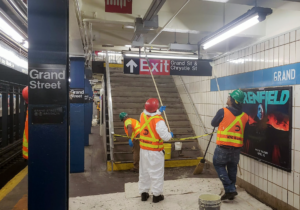Calif. reveals high-speed train plans
Written by adminThe California High-Speed Rail Authority on released its much-anticipated "alternatives analysis," the most detailed view yet of how the massive transportation project might forever transform the region from San Francisco to San Jose, the Mercury News reports.
The controversial $40-billion
bullet train would whisk passengers at speeds up to 125 mph along the Caltrain
corridor and travel to Los Angeles. Service is expected to begin late next
decade.
The rail authority is
proposing three track alignment options: raised tracks on either open aerial
structures similar to freeway overpasses or on filled-in berms, typically about
20 feet above street level; adding two tracks next to the existing Caltrain
railroad; or underground tracks through either a tunnel or open trench. At no
point would the tracks cross a road at street level.
The authority plans to
select a track alignment in early 2011, and construction is expected to start
in late 2012. That would give planners, city officials and residents a year and
a half to study – and debate -the configurations proposed Wednesday.
Many cities favor
underground tracks but fear they would be too expensive. High-speed rail
project manager Dominic Spaethling said the authority is studying the options
and does not yet favor any one particular alignment.
In most scenarios, the
railroad would feature four side-by-side tracks, with two for electrified
Caltrains and a pair for bullet trains.
The expansion may result in
the use of eminent domain, although Spaethling said the authority might
consider stacking tracks, two-by-two, in tight areas such as Millbrae, San
Mateo and Redwood City.
Among the highlights of the
newly released report, the state said it is now considering Mountain View, in
addition to Palo Alto and Redwood City, for the region’s fourth high-speed rail
station. Stops have already been cemented in San Francisco, San Jose and
Millbrae.
Also, for several cities
that want the railroad "out of sight, out of mind," the authority
said it would study tunneling or trenching in communities such as Burlingame,
Palo Alto, Menlo Park and Atherton.
Two of those cities, Menlo
Park and Atherton, went as far as to sue the rail authority last summer, and
Palo Alto filed a legal brief in support of their lawsuit earlier this year. A
Sacramento judge next week is expected to issue a disposition in the suit
against the rail authority.
" Other cities and
areas where tunneling or trenching are set to be studied include San Francisco,
Millbrae, northern San Mateo, southern San Carlos, northern Redwood City,
Mountain View, northern Sunnyvale, Santa Clara and San Jose.
Some cities received only
one proposal and would not have their track elevations altered. Instead,
planners will likely just add two tracks to the sides of their existing stretch
of Caltrain railroad. These sections include the stretches between the Bayshore
and South San Francisco Caltrain stations, most of San Bruno, from southern San
Mateo to northern San Carlos, and from southern Sunnyvale to northern Santa
Clara.
Conversely, the rail
authority said it would absolutely need to build elevated rail bridges or send
its trains underground in northern San Mateo and near the Redwood City and San
Jose Diridon Caltrain stations. The trains would need to run underground in
most of northeastern San Francisco, as well.
Finally, the rail authority
released six proposals for the start and stop points for the Bay Area portion
of the high-speed rail line. The authority said the San Jose stop would either
be at the Diridon Station or adjacent to it, and proposed four areas for the
San Francisco stations at or just south of the Transbay Terminal.
Spaethling said in many
areas the authority would also study whether to raise or lower roadways to
accommodate high-speed trains traveling beneath or over them.
The proposals put to rest
any hopes residents had that the tracks would travel along an alternative path,
such as Interstate 280 or Highway 101.





